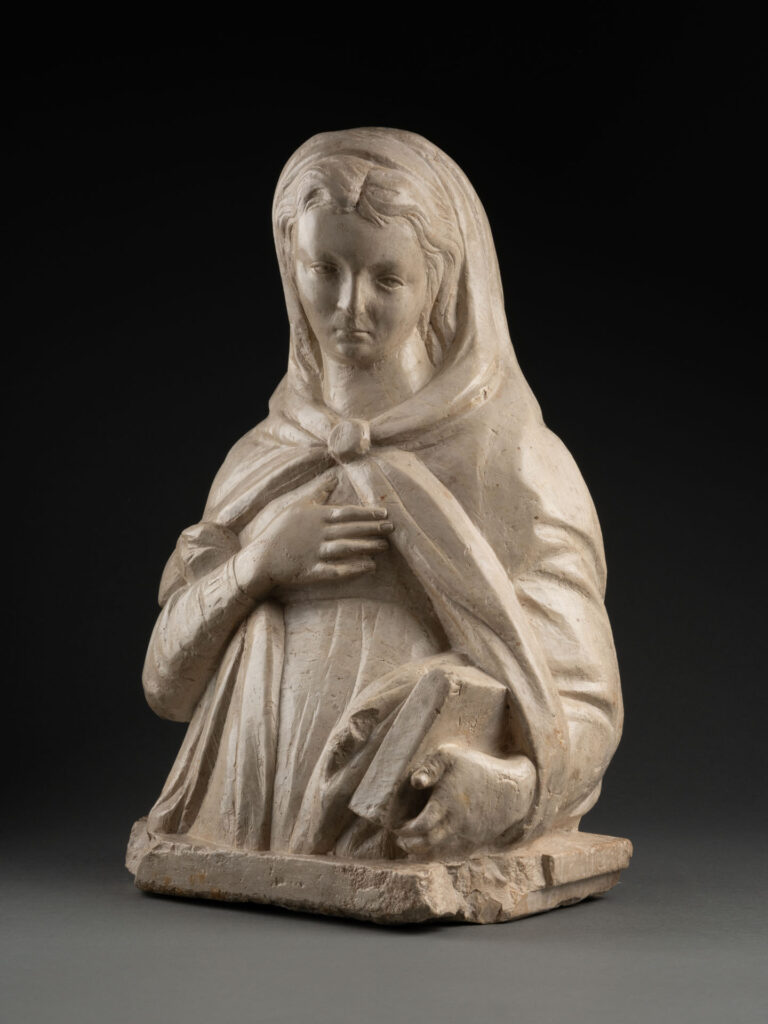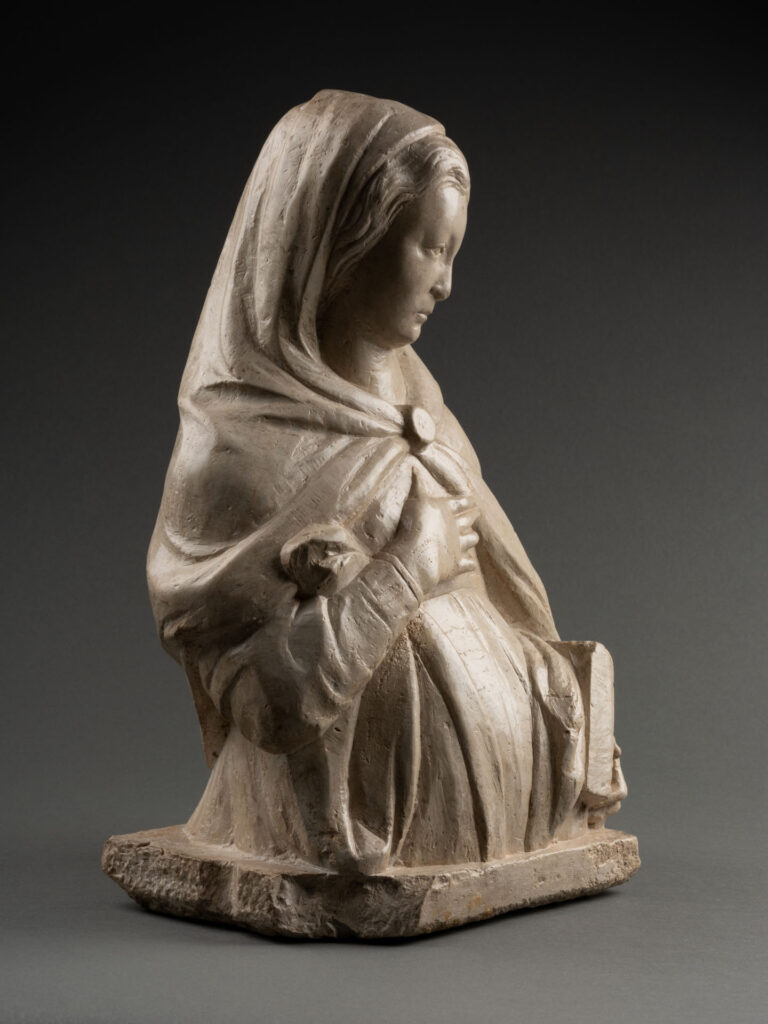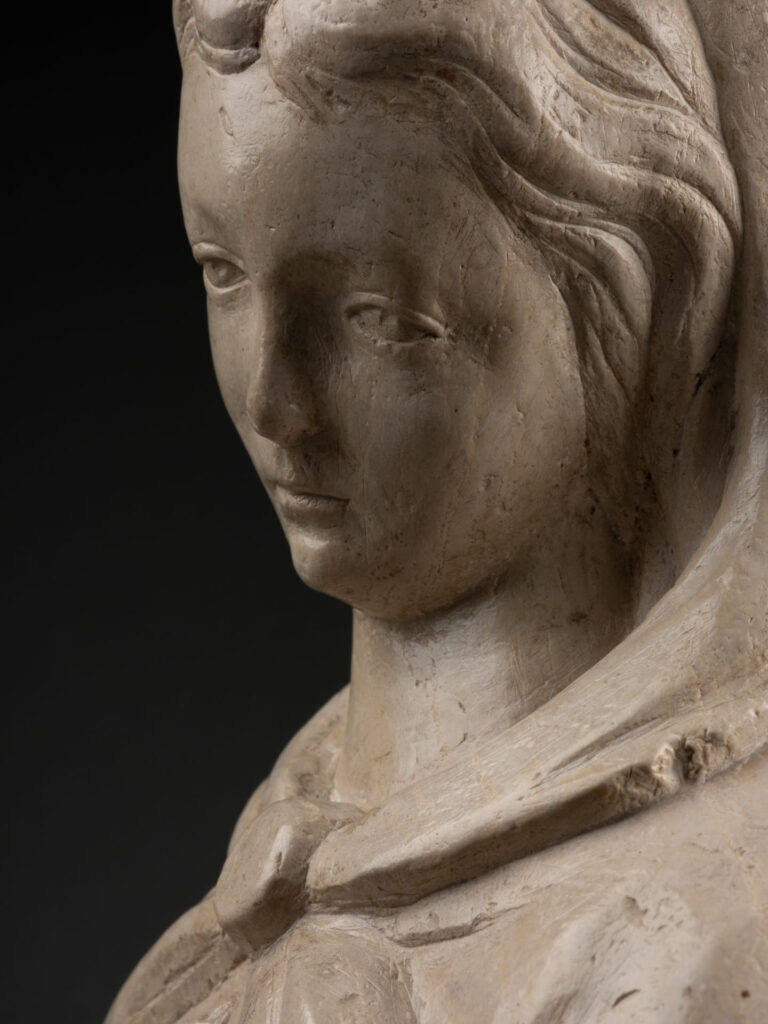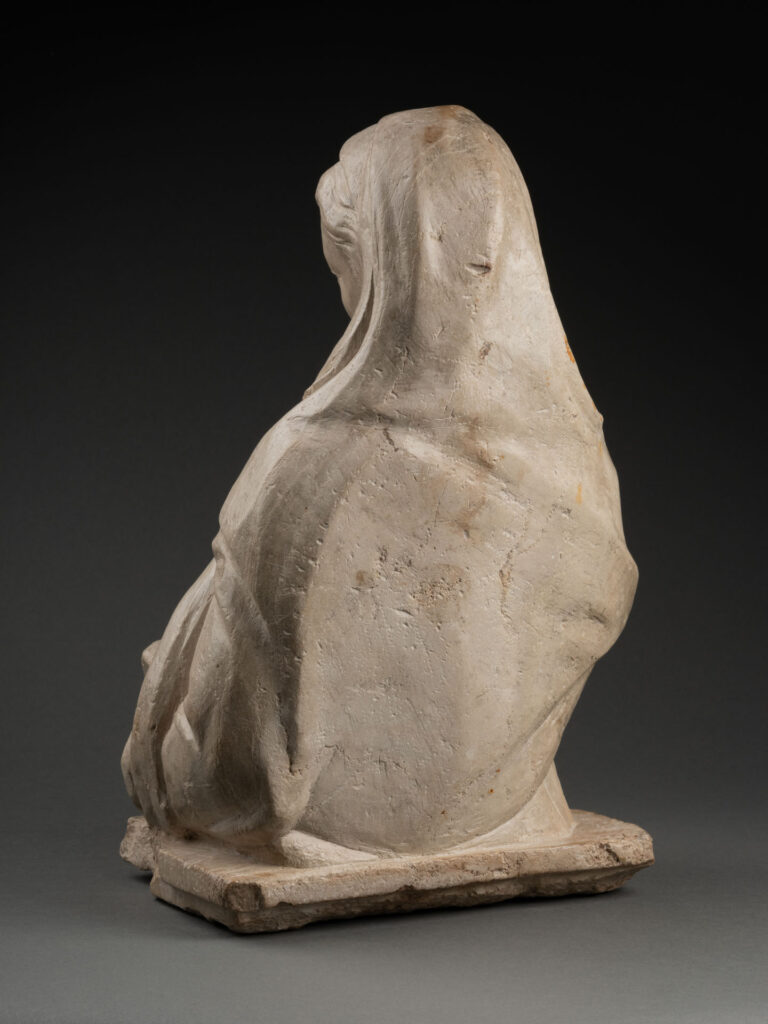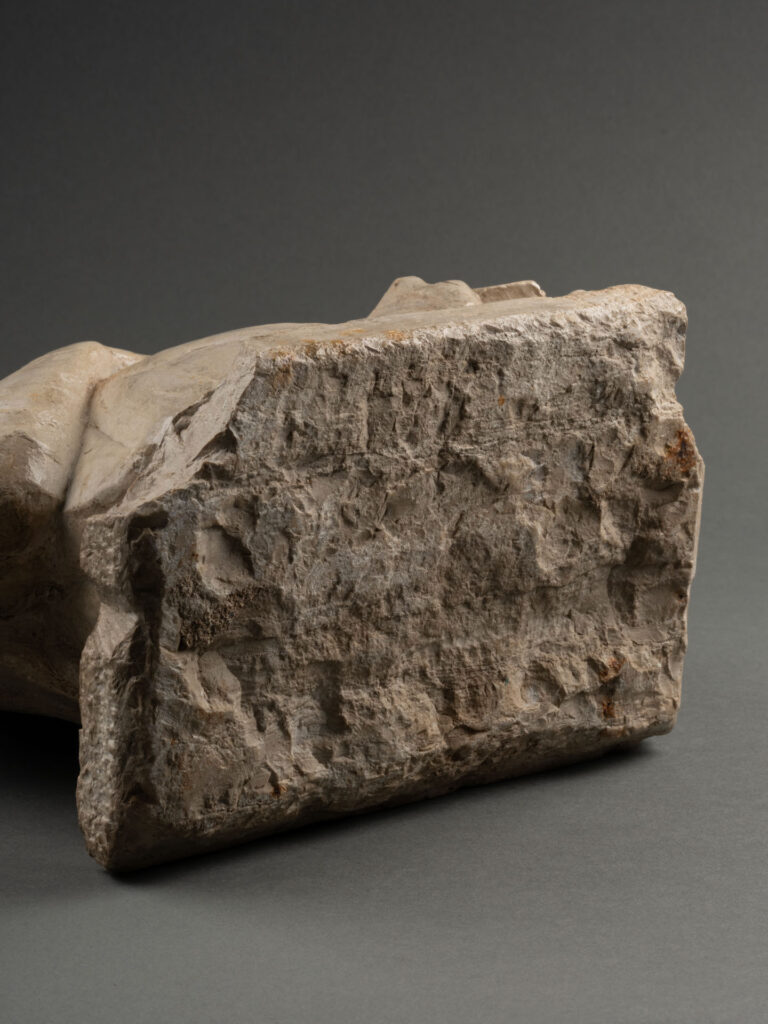This late 15th century half-bust in Istrian stone depicts the Virgin of the Annunciation.
Cut at the waist, the Virgin rests on a sculpted base. She is depicted as a young woman, with fine, gentle features and her head tilted to the left. His gaze, accentuated by the presence of pupils in his eyes, seems distant. She wears a veil revealing her wavy hair, held back by a button at her neck.
His right hand rests on his chest, while his left holds a book. His right arm holds back a slightly protruding piece of his clothing. The Virgin seems already pregnant.
Made of Istrian stone, the half-bust must have been part of an altar piece or tomb. Istrian stone is a material close to marble, often considered a variant of it. It comes from the town of Istria in Croatia and was widely imported into Venice from the 12th century onwards, being used in the construction of many Venetian buildings, such as the Bridge of Sighs.
The Annunciation is an episode recounted in the Gospel according to Saint Luke, chapter I, 26-38, in which the archangel Gabriel announces to the Virgin Mary her divine pregnancy. In art, the Annunciation is represented by the presence of Mary, the Archangel Gabriel, and sometimes God or the Holy Spirit in the form of a dove. In Western art from the 12th century onwards, Mary is depicted reading a book.
This bust can be compared with a statue of a Venetian Madonna of the Annunciation in the Victoria and Albert Museum in London, dated 1440-1460, and attributed to Giorgio da Sebenico, Antonio di Bregno and Bartolomeo Buon.
The position of the Virgin’s right hand, the presence of the book, the veil with a few hairs escaping, the button holding the veil in place and the slightly tilted head all suggest that the half-bust was created by a Venetian sculptor in Bartolomeo Buon’s circle in the second half of the 15th century.
The Virgin’s solemn, gentle gaze lends the work a profound intensity, moving the viewer and restoring the Virgin’s humanity as she announces her divine maternity.
